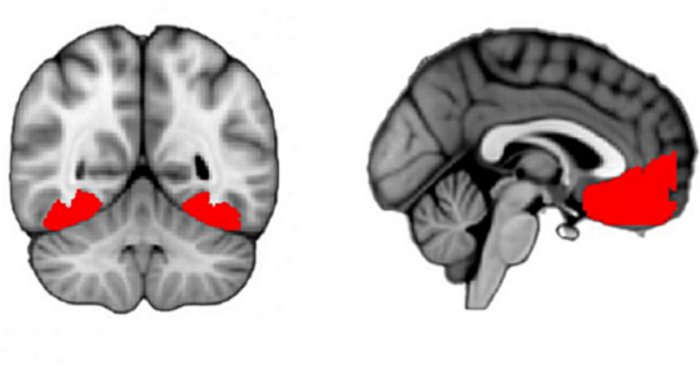Eddie Gonzales Jr. – MessageToEagle.com – A Columbia University research team has observed brain activity during moments of curiosity.
Left: Image credit: ErAnger – Pixabay; Right: Pixabay
Their study, published in the Journal of Neuroscience, identified brain regions that evaluate uncertainty in visually ambiguous situations, leading to feelings of curiosity.
“Curiosity has deep biological roots,” Jacqueline Gottlieb, PhD, a Zuckerman Institute principal investigator said in a press release. She added that curiosity’s main evolutionary advantage is promoting exploration that aids survival.
Researchers used functional magnetic resonance imaging (fMRI) to measure brain activity in 32 volunteers. This technology tracked blood-oxygen levels as subjects viewed images, ahowing which brain regions were most active.
The researchers asked participants to rate their confidence and curiosity about each texform. They found that the two ratings were inversely related. The more confident subjects were that they knew what the texform depicts, the less curious they were about it.
The less confident subjects were about guessing the texform, the more curious they became.
Using fMRI, researchers observed brain activity as subjects viewed texforms. The scans revealed high activity in the occipitotemporal cortex (OTC), a region above the ears involved in vision and object recognition. Previous studies suggested that clear images would show distinct OTC activity patterns for animate and inanimate objects.
Human brain-scan images show regions toward the back and front that are active for a person who is feeling curious. (Credit: Gottlieb Lab/Columbia’s Zuckerman Institute)
The study was significant because this is the first time it’s possible to connect the feeling of curiosity to how the brain represents information.
Two key implications of the study are important: While it focused on visual stimuli-induced perceptual curiosity, people experience other forms like factual and social curiosity. So, the researchers suggested that the mechanism uncovered might apply to these other forms of curiosity as well.
A second possibility on Dr. Gottlieb’s mind is that the findings could have diagnostic and even therapeutic implications for those with depression, apathy or the inability to feel pleasure, which are conditions often marked by a lack of curiosity.
“Curiosity involves enthusiasm and a willingness to explore your surroundings. It’s intrinsically motivated, driven by the hope that learning will yield positive results,” Dr. Gottlieb explained, highlighting curiosity’s remarkable qualities.
Paper:
- Michael Cohanpour, Mariam Aly, Jacqueline Gottlieb. Neural Representations of Sensory Uncertainty and Confidence are Associated with Perceptual Curiosity. The Journal of Neuroscience, 2024; e0974232024 DOI: 10.1523/JNEUROSCI.0974-23.2024
Written by Eddie Gonzales Jr. – MessageToEagle.com Staff Writer








